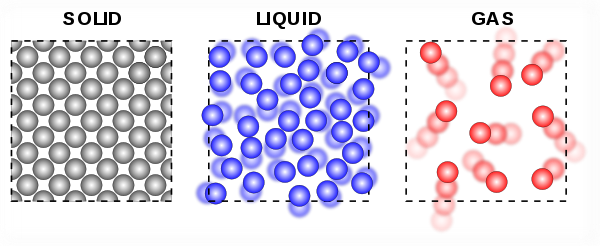
Scientists use models to help understand and predict how things work.The models are simplified versions of the real thing that explain the most important features.
A very important model in science is the particle model. The particle model is used by scientists to understand the physical properties of solids, liquids and gases.The particle model makes three assumptions:
Solids,liquids and gases are all made up off hard, ball-like particles that cannot be split. We cannot see them with just our eyes.
These particles are constantly movingmoving and jiggling
Thereeareeforcesforces holding these particles together
Here is a model ofsolids,,liquidsliquids and gases.

1 Refer to the particle model diagrams above to compare the movement of particles in solids liquids and gases..
2 (a) The forces of attraction hold the particles of substance together. In which state of matter (solid, liquid or gas) these forces of attraction are:
(ii) weakest ---
3 From your answers to Questions 1 and 2, try to explain why
solids hold their shape
liquids take on the shape of their container
and gases fill their container.
4 Use the particle model diagrams to describe the distance between particles in solids, liquids and gases.
5 Explain why solids and liquids are cannot be squashed. Explain why gases are compressible.
6 Use the particle models to construct particle model diagrams of the following casess.
(a)
An
ice cube floating in water
(b)
A bubble of air trapped in a block off
ice
(c)
Boiling water
(d)
A water
droplet suspended in
airair